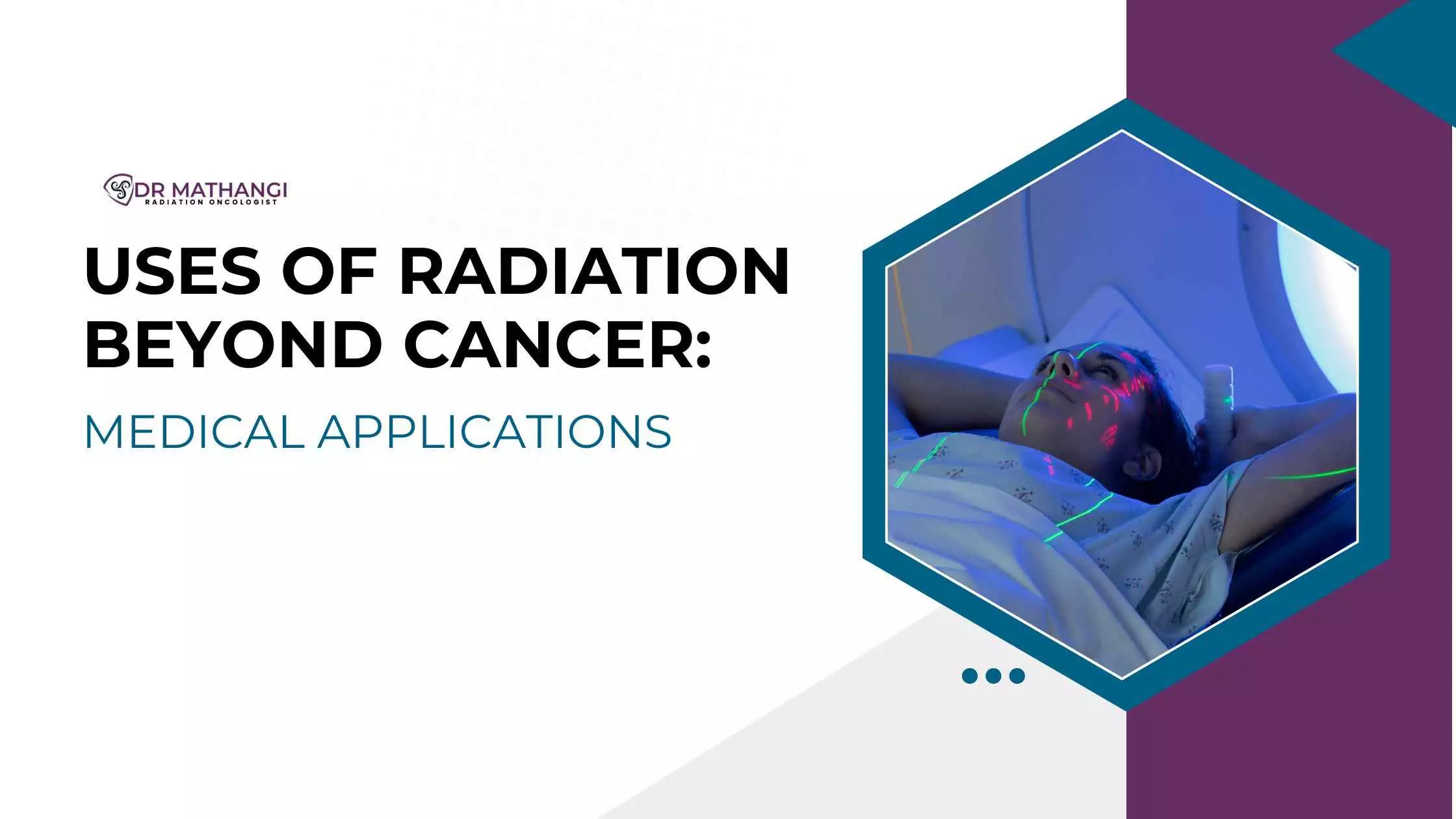
Although nearly 60% of cancer patients receive radiation therapy as part of their treatment, the uses of radiation extend far beyond oncology. Radiation plays a vital role in various medical and non-medical sectors, improving diagnostics, enhancing treatment, and supporting industrial applications. This article highlights how radiation is used beyond cancer care, and how experts like Dr. Mathangi J ensure its safe and effective application across diverse domains.
With over 15 years of expertise and more than 12,000 successfully treated patients, Dr. Mathangi is a renowned Senior Consultant and In-charge of Radiation Oncology at Gleneagles Cancer Institute. Her advanced training in stereotactic techniques, IGRT, and intraoperative radiotherapy allows her to implement sophisticated radiation-based interventions for cancer and non-cancer treatments alike. Her leadership in installing the Asia Pacific’s first TrueBeam STx Machine has set a benchmark in radiological precision and innovation.
Diagnostic imaging is one of the most common uses of radiation in medicine. Techniques such as X-rays, CT scans, and PET scans rely on low-dose radiation to produce detailed internal images. These modalities are critical in diagnosing fractures, tumors, infections, and vascular anomalies. Dr. Mathangi ensures that imaging protocols follow stringent guidelines to minimize radiation exposure while maximizing diagnostic value.
Another essential application is radiation sterilization. High-energy gamma or electron beams are used to sterilize medical instruments, surgical gloves, syringes, and even pharmaceuticals. This method effectively kills bacteria and viruses without leaving chemical residues. In collaboration with hospital infection control teams, Dr. Mathangi advocates for radiation-based sterilization as a safe, reliable alternative to conventional methods.
While traditionally used for cancer, radiation also plays a role in pain relief for non-malignant conditions. Low-dose radiation can be administered for degenerative joint disorders, arthritis, or inflammation in specific musculoskeletal conditions. This form of treatment reduces swelling, alleviates pain, and improves quality of life. Under Dr. Mathangi’s expert supervision, such therapies are tailored precisely to avoid long-term complications.
Beyond oncology, radiation is utilized in treating benign tumors (e.g., acoustic neuromas), arteriovenous malformations (AVMs), and certain skin disorders like psoriasis. These non-cancer treatments are often administered through techniques such as Stereotactic Radiosurgery (SRS) or Superficial X-ray Therapy. Dr. Mathangi’s global training in SRS/SBRT ensures optimal treatment planning, especially for neurologic and dermatologic indications.
The industrial uses of radiation support healthcare indirectly but significantly. For instance, radiotracers are employed in pharmaceutical research to study drug absorption and metabolism. In addition, radiation gauges help monitor and control the manufacturing of medical-grade plastics and packaging. Dr. Mathangi often collaborates with medical physicists and research institutions to explore safe industrial synergies in radiation technology.
Given the potential risks of radiation, rigorous safety measures are paramount. Lead shielding, dosimetry monitoring, radiation badges, and automated shut-off systems are standard in clinical environments. Dr. Mathangi ensures that all procedures at Gleneagles Cancer Institute comply with international radiation safety standards, and her department conducts regular training sessions for medical staff to reinforce safe practices.
Emerging research suggests future uses of radiation in regenerative medicine, such as enhancing stem cell engraftment or managing autoimmune disorders. Precision radiation may also be used in neuromodulation for psychiatric and movement disorders. With pioneers like Dr. Mathangi at the helm, these frontiers are being explored with caution, innovation, and clinical rigor.
Whether for cancer care or broader medical use, radiation is not a one-size-fits-all solution. Its application must be customized, regulated, and constantly reviewed. Dr. Mathangi’s commitment to patient-centered care, international collaboration, and advanced radiotherapy makes her a sought-after expert in this domain. Her role as Director of Fellowship in Advanced Radiotherapy Techniques ensures the next generation of professionals are trained in these multidisciplinary applications.
Interested in exploring radiation for non-cancer needs or have questions about its safety and utility? Submit your details on the official contact form, and Dr. Mathangi’s team will coordinate an appointment. Whether it’s diagnosis, sterilization, pain control, or advanced treatment—get the clarity and confidence you deserve from one of India’s leading radiation specialists.
With radiation becoming a cornerstone of modern medicine, ensure your care is in the right hands. Choose expertise. Choose innovation. Choose Dr. Mathangi J.